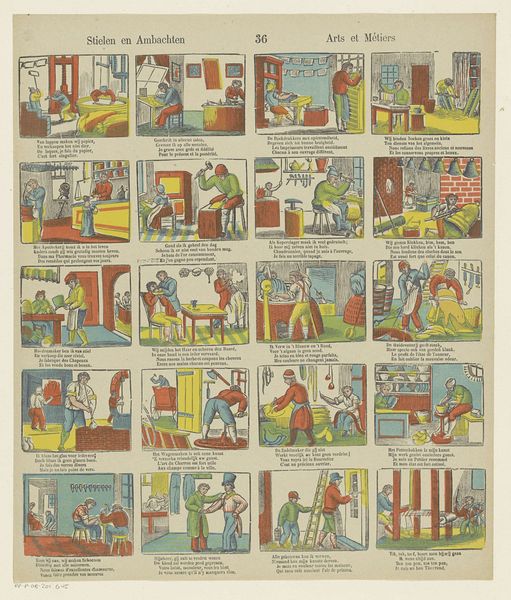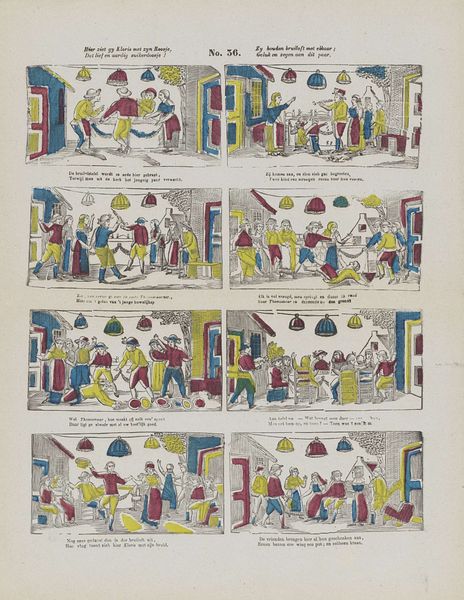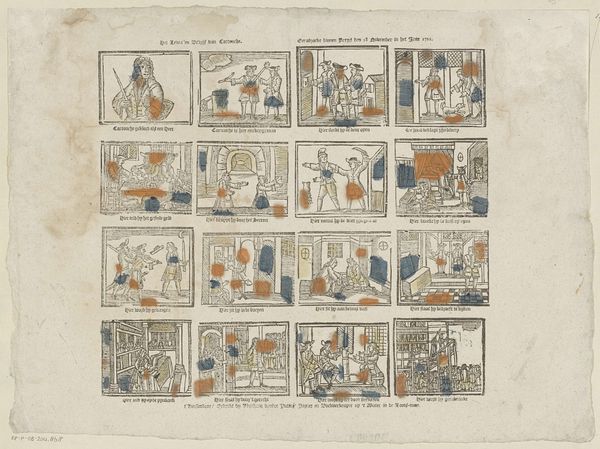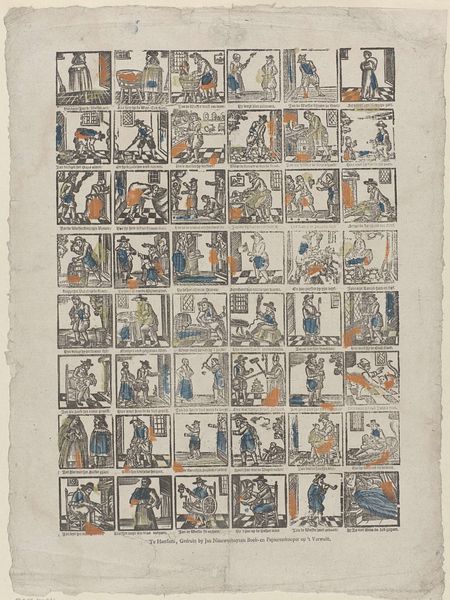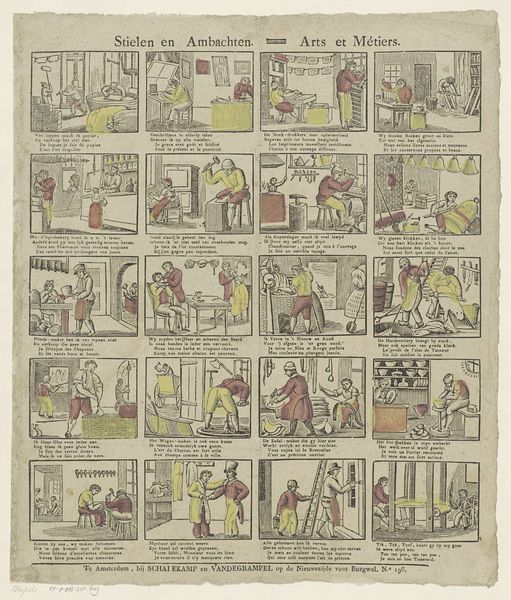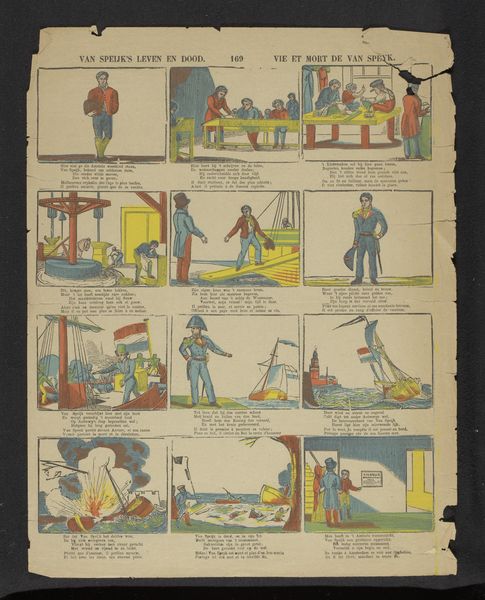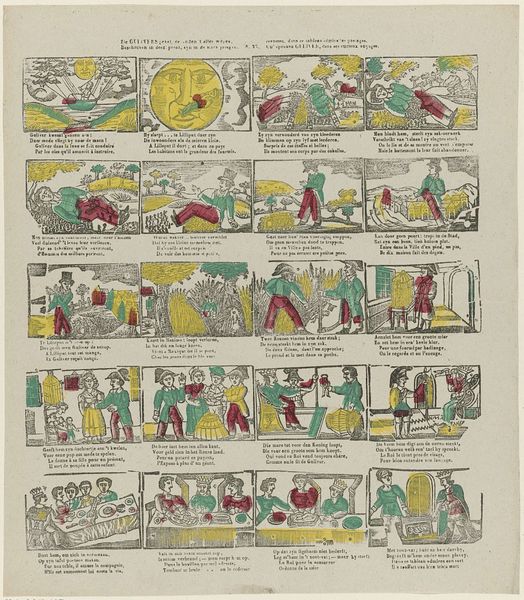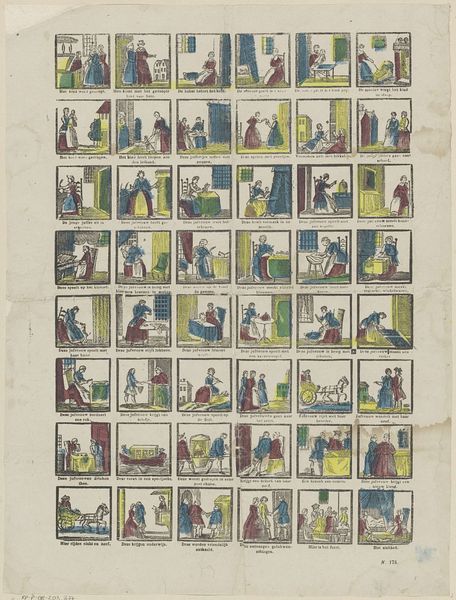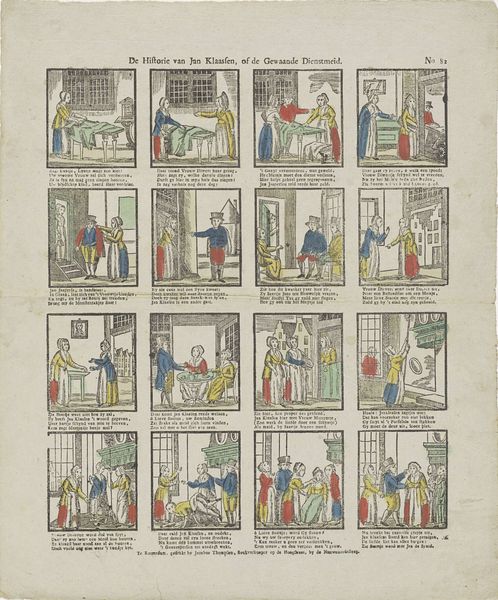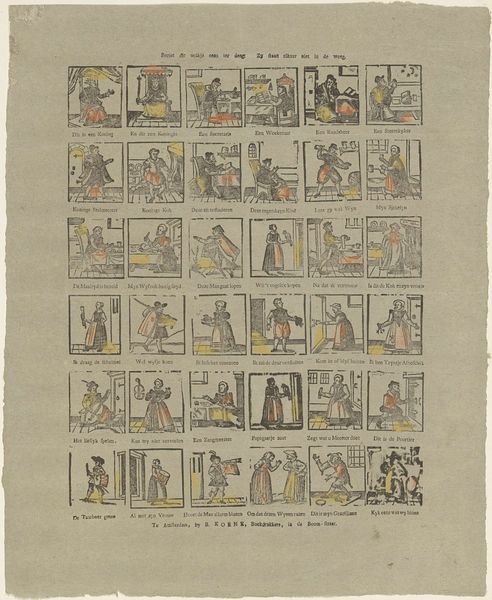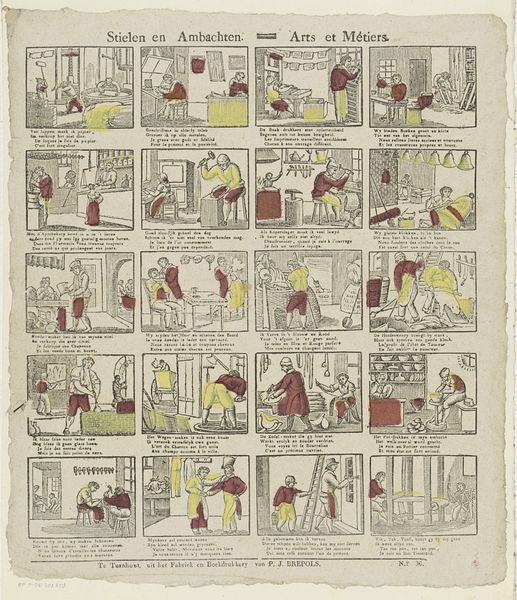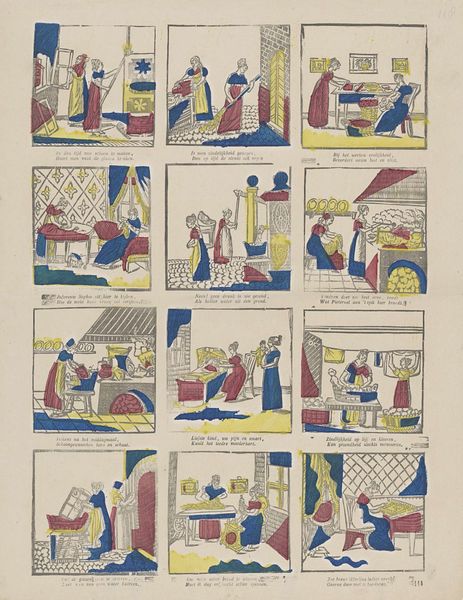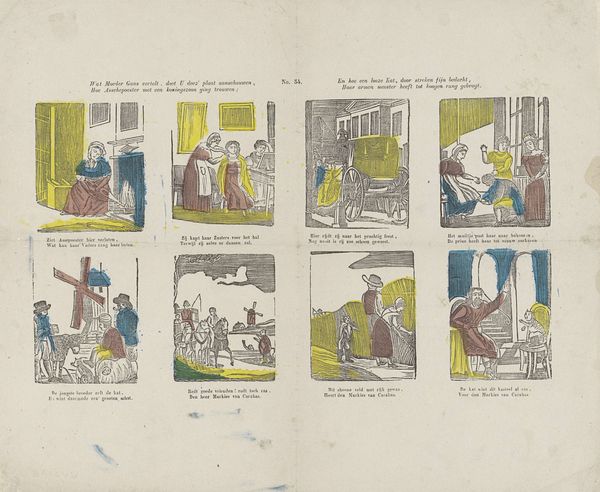
lithograph, print
#
cartoon like
#
cartoon based
#
narrative-art
#
comic strip
#
lithograph
# print
#
traditional media
#
personal sketchbook
#
illustrative and welcoming imagery
#
genre-painting
#
storyboard and sketchbook work
#
cartoon carciture
#
sketchbook art
#
cartoon theme
Dimensions: height 394 mm, width 302 mm
Copyright: Rijks Museum: Open Domain
Curator: Welcome. Here, in the Rijksmuseum, we are looking at a lithograph entitled "Stielen en Ambachten / Arts et Métiers". It’s by Brepols & Dierckx Zoon and was printed sometime between 1833 and 1911. It's quite an interesting piece that depicts, in cartoon-like panels, different professions and crafts. Editor: My first impression? It feels like a beautifully preserved page from an old children's book, perhaps one meant to instruct while entertaining. There's a charm in the simple lines and limited color palette, despite feeling a bit didactic. Curator: Yes, didactic in the sense that these types of prints served as visual compendiums of knowledge, illustrating various trades from carpentry and printing to tailoring. These images circulated widely, influencing perceptions about labor and social hierarchies of the time. Editor: Absolutely. You see the figures are engaged in physical labor, crafting objects, which idealizes industry, yet it simultaneously masks potential issues like worker exploitation or social inequality within these trades. Note the absence of any narrative questioning this status quo. Curator: That’s astute. The seemingly innocuous illustrations reinforced existing power structures. By portraying an idealized view of labor, it conveniently avoids discussions around fair wages, working conditions, or the impact of industrialization on the lives of ordinary people. It served almost as propaganda. Editor: Which brings me to wonder about the accessibility and purpose. Was this destined for schools? Or was this distributed more broadly as a reflection on the value of crafts, promoting perhaps a return to 'honest labor' as opposed to a world shifting with increasing complexity in early capitalism? Curator: Very likely it was intended to be used in education given its division in panels, akin to pages in a workbook. Looking at this artwork through today’s lens pushes us to consider the complicated relationship between art, labor, and the prevailing societal attitudes towards work at the time. Editor: Exactly. What appears at first glance as simply informative quickly transforms into a window for critical dialogue. Let's keep questioning the art we see to understand more clearly its power over how we interpret the past and view our present circumstances.
Comments
No comments
Be the first to comment and join the conversation on the ultimate creative platform.
